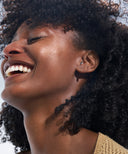Have you ever heard ringing or buzzing in your ears after a festival or concert? This noise is a sign of hearing damage. Unfortunately, by the time you notice it, it's already too late. The damage is done, and it's irreversible. If your hearing – and music – are important to you, it's essential that you wear earplugs when you need them. However, despite the dangers, many people don't! At the average music festival, you could be at risk of permanent hearing damage in under 15 minutes. But how loud is the music at festivals? When does the volume become harmful? And how do you protect your hearing at festivals and concerts without it affecting your enjoyment? Read on to find out!
What is a decibel?
The decibel (dB) is a unit used to measure sound intensity. Named after the scientist and inventor Alexander Graham Bell, the decibel scale was originally used in telephony to measure how much the signal weakened as it travelled along telephone cables. The lowest perceptible volume that humans can hear is 0 dB. At 100 dB, the sound feels uncomfortably loud, and at around 120 dB, the volume reaches the pain threshold.
It's helpful to understand that the decibel scale is what is known as a logarithmic scale. Unlike a linear scale, where numerical values increase uniformly by single steps, a logarithmic scale increases exponentially. On the decibel scale, an increase of 10 dB actually doubles the perceived volume. In other words: 60 dB is twice as loud as 50 dB. So a 10 dB difference is much more significant than you might expect.
How loud are festivals and concerts?
There is no specific legislation in the UK about the maximum volume audiences can be exposed to. However, the UK’s Health & Safety Executive recommends that general levels do not exceed 107 dB. Event organisers work with the local authority, usually following an industry code of practice in which recommended noise levels are based on things like how often an event takes place and whether it’s in an urbal or rural area So wat's the decibel level at the average live music event?
- The volume at a typical indoor concert is usually somewhere between 90 and 120dB.
- At outdoor events like festivals it averages 90 to 100 dB.
- But rock bands are sometimes as loud as 125 dB!
At what level does the sound at a festival damage hearing?
If you're exposed to just 80 decibels for more than eight hours, you're at risk of hearing damage. For every additional 3 dB, the length of time you can 'safely' remain exposed is reduced by half. In effect, the sound then becomes twice as loud. This means you can be exposed to 83 decibels for just four hours before you risk hearing damage, but this drops to just two hours at 86 decibels, and so on. The noise level at an average festival is around 100 decibels. It takes just five minutes of exposure to sound at this level to cause hearing damage. The level of dB attenuation (noise reduction) you need at a festival depends not only on how loud the music is but also on how long you're exposed to it.
How does hearing damage happen?
Deep inside the ear is an organ called the cochlea that houses sensory cells covered in thousands of tiny hairs called cilia. As we age, the cilia gradually degenerate, which is why our hearing deteriorates in later life. This is known as age-related hearing impairment. However, the cilia can also be damaged earlier by exposure to loud noise. This can happen suddenly because of a single exposure to extremely loud noise or gradually, through repeated or lengthy exposure to sounds above 80 decibels. The cilia aren't able to regenerate after being damaged, and so far, medical science hasn't discovered a way of repairing them.
What level of attenuation should your earplugs have at a music event?
To prevent hearing damage at a concert or festival, you should wear earplugs with an attenuation of 18 to 25 decibels. Our universal Alpine PartyPlugs have an attenuation of 19 decibels, and the Alpine PartyPlug Pros attenuate by 21 decibels. These will reduce the noise to safe levels in most conditions, so you can enjoy the music safely and comfortably all day (up to 8 hours). Our custom festival earplugs offer you a choice of 18, 23 or 25 dB attenuation.
Can you still enjoy the music with earplugs in?
Cheap foam earplugs can affect the quality of the music you're listening to. However, Alpine PartyPlug filter earplugs have special acoustic filters that dampen harmful volumes without compromising the music experience. And you'll still be able to have a normal conversation with your friends
How do I prevent loud music at festivals from damaging my hearing?
By following the tips below, you can prevent hearing damage at festivals and concerts:
#1. Stay away from the speakers
Avoid standing next to the speakers. The noise levels near the speakers can easily exceed 110 decibels, putting you at risk of hearing damage within seconds.
#2. Wear suitable hearing protection
Wear proper hearing protection. Our high-performance festival earplugs have built-in filters to reduce the volume to a safe level while allowing you to hear the music clearly and have normal conversations.
#3. Give your ears a break
Take some time away from the noise every now and then to give the cilia in your cochlea a chance to recover. For example, leave the tent once an hour to get a drink from the bar, go to the loo or wander around the festival grounds where the music is quieter.
Need help choosing the right hearing protection for festivals and concerts?
You only have one pair of ears. So make sure you can continue to enjoy music for years to come by using music earplugs at festivals and concerts! Or take our online quiz to quickly find your perfect Alpine earplugs


